Books by Friederike Landau-Donnelly
AIA , 2024
This collective artist book is the result of the group residency PUBLISHING AS AN ARTISTIC PRACTI... more This collective artist book is the result of the group residency PUBLISHING AS AN ARTISTIC PRACTICE, facilitated by The Museum of Loss and Renewal in partnership with Amsterdam-based Studio The Future / The Future Publishing and Printing. It was offered for creative practitioners from a variety of geographic, cultural and artistic background to join in a 100-hour-long project to create a book that both hosts and challenges individual participants' ideas about books they would one day like to write
Agenda Publishing, 2023
“The radically diverse contributions to this collection provide so much to think with. From essay... more “The radically diverse contributions to this collection provide so much to think with. From essayistic reflection through dedicated analysis of generally dynamic and contested empirical topics, to theoretical exposition, the volume overall confronts tensions and gaps in current work with practice theories and makes contributions to current frontiers of theoretical development in the field.” - Matt Watson, Professor of Geography, University of Sheffield

Curating Waste - Following the Politics of Plastic across Bodies of Water, 2023
This text is a collection of droplets, a basin of thoughts, concepts and conversations we have ha... more This text is a collection of droplets, a basin of thoughts, concepts and conversations we have had across screens and oceans, and across borders and states. We trace the undercurrents of our collaboration called Curating Waste, a project supported by a bilateral collaboration between Radboud University in Nijmegen, the Netherlands, and Western University in London, Ontario, Canada. In this multi-locational project, we have discussed the political implications of waste in particular that of plastic waste-and its expanding presence in cultural and environmental contexts. We wondered what waste actually is, what art is, and what happens when the two meet. As all of our research locations are deeply connected to bodies of water, the Waal and Rhine rivers in the Netherlands, and Thames River/Deshkaan Ziibing in Southwestern Ontario, we have been physically and intellectually influenced by waters as radically relational matters that have brought us together across an ocean and time zones. Workshop with Martine van Lubeek, November 17, 2022, creating a phonetic map of the bodies of water we listened to at Sonsbeek park, Arnhem Design by Martine van Lubeek
The relation between politics, ontology, and space remains one of the most contested concerns in ... more The relation between politics, ontology, and space remains one of the most contested concerns in human geography, often leading to a dismissal of ontology in favor of the politicization of space. In contrast, this article mobilizes post-foundationalism to propose a political ontology of space. After reviewing geographers' engagements with politics, post-politics and the political, the article demonstrates how a post-foundational geography radically uproots geographic understandings of political and socio-spatial realities. Grounded upon parameters of negativity, contingency, and antagonism, the article equips geographers to grapple with the crumbling foundations of an uncertain present, and unknown futures.
forthcoming April, 2021
Post-foundationalism departs from the assumption that there is no ground, necessity, or objective... more Post-foundationalism departs from the assumption that there is no ground, necessity, or objective rationale for human political existence or action. The edited volume puts contemporary debates arising from the »spatial turn« in cultural and social sciences in a dialogue with post-foundational theories of space and place to devise post-foundationalism as radical approach to urban studies. This approach enables us to think about space not only as socially produced, but also as crucially marked by conflict, radical negativity, and absence. The contributors undertake a (re-)reading of key spatial and/or post-foundational theorists to introduce their respective understandings of politics and space, and offer examples of post-foundationalist empirical analyses of urban protests, spatial occupation, and social movements.

Routledge Series "Political Sociology", 2019
This book offers an empirically-grounded account of the emergence and political activities of a n... more This book offers an empirically-grounded account of the emergence and political activities of a new collective actor in Berlin’s art field. Investigating the organizational and representative practices of Koalition der Freien Szene (Coalition of the Independent Scene) – a trans-disciplinary action platform assembling a wide variety of cultural producers in Berlin – the author unpacks the political organization of one of the most compelling contemporary art scenes, or ‘creative’ cities, worldwide, analysing both its concrete policy ‘success’ and the means by which it seeks to challenge and rearticulate the meaning of Berlin as a ‘creative’ city from the producers’ point of view. The book thus opens new opportunities for long-term transformations of the cultural political field. Theoretically sophisticated and based on empirical material including interviews with spokespeople and cultural administrators, Agonistic Articulations in the ‘Creative’ City presents a unique conceptualization of new modes of political collectivization, representation and legitimacy that imagine new avenues of political engagement at a time when political institutions, parties and regimes of representation are in crisis. As such, it will appeal to scholars of sociology, political science and urban studies with interests in social movements and cultural activism.
Papers by Friederike Landau-Donnelly
Western University Repository, 2025
Hearing Conflicts in Museums employs research-creation to reflect on site visits to the Canadian ... more Hearing Conflicts in Museums employs research-creation to reflect on site visits to the Canadian Museum for Human Rights, and to grapple with questions about listening in museums, as well as how to understand conflict and polyvocality.

cultural geographies, 2025
This conceptual article discusses how dancing and twerking bodies co-produce museum spaces, which... more This conceptual article discusses how dancing and twerking bodies co-produce museum spaces, which challenge dominant conceptions of who and what matters in museums. It examines the dance performance in the music video Cool Off (2019) 1 by iconic Black female hip hop artist Missy Elliott via a systematic, critical visual analysis. Engaging with affective data that moves (us), I unpack the video's embodied and spatial dimensions as practices of queering the museum-i.e., schdestabilizing heteronormative, hegemonic museum representations and narratives through Black and queer geographic scholarship, and critical dance studies. By remixing existing museum elements (e.g., pedestals, white cubes, golden picture frames) with twerking, rap and bright colors, Missy Elliott creates a self-directed virtual-only museum space that gives space to Black bodies that dance, move, freeze-thus claiming space for those narratives, cultural practices and legacies of Black (queer-feminist) culture that have previously been underrepresented, or been (made) absent, in museums. Missy Elliott's museum space bursts with life, a sense of community, celebration and joy. Via the proposition of the 'para-museum', which imagines counter-hegemonic museums to function besides and beyond existing museum structures, I project possibilities for museums of and for the future that create and hold space for affective, embodied knowledge constituted by dancing bodies.
Arts of the Working Class, 2024
READ CONTACT BUY SUPPORT ınıfının Sanatları-הפועלים מעמד אמנויות-اﻟﻌﺎﻣﻠﺔ اﻟطﺑﻘﺔ ﻓﻧون-... more READ CONTACT BUY SUPPORT ınıfının Sanatları-הפועלים מעמד אמנויות-اﻟﻌﺎﻣﻠﺔ اﻟطﺑﻘﺔ ﻓﻧون-Sztuka klasy robotniczej-Künste der A READ CONTACT BUY SUPPORT ınıfının Sanatları-הפועלים מעמד אמנויות-اﻟﻌﺎﻣﻠﺔ اﻟطﺑﻘﺔ ﻓﻧون-Sztuka klasy robotniczej-Künste der A fig. 1: "Through the clouds that carry our protesting voices, we stay infrastructured together in solidarity". Photo by Friederike Landau-Donnelly READ CONTACT BUY SUPPORT ınıfının Sanatları-הפועלים מעמד אמנויות-اﻟﻌﺎﻣﻠﺔ اﻟطﺑﻘﺔ ﻓﻧون-Sztuka klasy robotniczej-Künste der A
Area , 2024
and co-productive research methods such as animation, poetry, story-telling, filming, creative wr... more and co-productive research methods such as animation, poetry, story-telling, filming, creative writing and zine-making have gained traction. Among others, creative methods can lead to new insights as they give room to un(der)-represented feminist, anti-racist, anti-colonial and queer voices (De Leeuw & Hawkins, 2017). Therefore, we also decided to apply creative methods in our ongoing research project Infrastructuring Libraries in Transformation (ILIT), which investigates public libraries as social infrastructures. We specifically use zine-making as a co-productive method, in which we ask research participants to create zines: small-scale, self-published and self-printed collages of texts and images.

Journal of documentation, May 21, 2024
As social infrastructures, public libraries are increasingly recognised as providing more than ac... more As social infrastructures, public libraries are increasingly recognised as providing more than access to books and information; librarians' work is importantly centred around practices of care. However, the ways in which they provide care is poorly researched, let alone conceptualised. This paper explores how this important part of librarians' daily work is practiced through the lens of infrastructuring. Design/methodology/approach-The paper first theoretically discusses the concepts of social infrastructuring, care and tinkering. Then, it turns to ethnographic research conducted in the public library networks of three European cities: Vienna (Austria), Rotterdam (the Netherlands) and Malm€ o (Sweden). The paper comprises empirical materials from all three countries and unpacks 16 librarians' daily working routines of care through participant observations. Findings-The empirical analysis resulted in three modes of social infrastructuring in public libraries: (1) maintaining, (2) building connections and (3) drawing boundaries. Practices of care are prominent in each of these infrastructuring modes: librarians infrastructure the library with and via their care practices. Whilst care practices are difficult to quantify and verbalise, they are valuable for library patrons. By using the concept of tinkering, the article conceptualises librarians' infrastructuring enactments as crucial community-building aspects of libraries. Originality/value-By focusing on the enactment of social infrastructuring, the paper goes beyond a descriptive approach to understanding public libraries as important social infrastructures. Rather, the paper unpacks how libraries come into being as infrastructuring agencies by highlighting what librarians do and say. Our international study articulates the importance of care practices in public libraries across different national contexts.

Museum & society, 2024
This article analyses the Conflictorium - Museum of Conflict, founded in 2013, in Ahmedabad, Guja... more This article analyses the Conflictorium - Museum of Conflict, founded in 2013, in Ahmedabad, Gujarat, India, and its use of museum space both within its designated location and the broader socio-spatial surroundings of the neighborhood and city. The museum is discussed as a site that offers space to experience and engage with conflicts about religion, citizenship, caste, identity and belonging in the historically and contemporary, polyphonic processes of Indian nation-making. By unpacking four, partially interrelated, dimensions of spatial transformations in the Conflictorium, the article offers an empirically-grounded understanding of museums' different spatial strategies to convene information, create affective atmospheres and memories about contentious aspects of contemporary Indian society that might not be attended to in state-run museum or political discourse. In sum, the article argues that museum spaces can function as socio-spatial and-technological infrastructures that forge for the cultivation of consciousness about conflict, and the radical interrelatedness of India's diverse social fabric.

Dialogues in Human Geography, Dec 5, 2023
This commentary engages with Secor&#39;s intriguing proposition of the spacetimeunconscious a... more This commentary engages with Secor&#39;s intriguing proposition of the spacetimeunconscious as a supplement to quantum physicist and philosopher Karen Barad&#39;s spacetimematter, which puts forth a non-linear conception of time, irreducibly linked with a discontinuous notion of space, and a vibrant, multi-agential perspective onto matter. By interconnecting new feminist materialisms and psychoanalytic geographies, Secor nuances existing approaches in psychoanalytic geographies by placing emphasis on the elemental, material paradoxes of the unconsciousexisting in/as/from the same fabric but also outside of themselves, in different aggregate states. With the aim to draw urban studies scholars and geographers closer to psychoanalytic thought, I make use of my own non-expert point of departure to first shed light on the offerings towards the academic politics of knowledge production that Secor&#39;s text holds. Second, I specify conceptual alignments between psychoanalytic and hydrofeminist geographical thought. Third, I mobilize the disjointed trope of hauntology to assist Secor&#39;s call for a more ambivalence-embracing and poetic approach to the production of geographical texts, knowledge and epistemologies.

Urban Studies, Dec 26, 2023
This paper proposes hope as a lens for critical urban research for the purpose of grasping the in... more This paper proposes hope as a lens for critical urban research for the purpose of grasping the interplay between forces of change and stability as manifested in popular uprisings, as well as in broader, self-organized spatial practices in everyday life. This hopeful lens allows for reimagining hope through the concept of ‘the political’, defined in the post-foundationalist literature as an ontological condition assuming the inherent impossibility of final closure, fixation or stability. The hopes thus arising from ‘the political’ provide critical urban scholars with better tools to navigate the ever-present possibilities for emancipatory change and action, arising from an ontological lack of foundations, upon which political orders are temporarily based. In this paper, we show how theoretical notions from post-foundationalism can expand the current sense of hope by instilling a non-teleological view on inherent opportunities for matters to be otherwise, thus implying the absence of a fixation on presupposed ideas of what genuine political change should look like. Through this lens, hope appears linked to concrete openings for alternatives found in everyday life. By laying out such a hopeful approach, we aim to expand the awareness of urban scholars to include both mundane and radical materializations and practices of ‘the political’ within urban settings. Ultimately, by reimagining hope to look beyond or alongside postpolitics, we unlock a future-oriented research agenda that adds nuance to an ontologically restricted conception of ‘politics’, which allows for broader empirical attunement to ever-present embodied signs of unfinished urban alternatives generated by ‘the political’.
UBC Research Repository, 2024
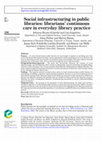
Journal of Documentation, 2024
As social infrastructures, public libraries are increasingly recognised as providing more than ac... more As social infrastructures, public libraries are increasingly recognised as providing more than access to books and information; librarians' work is importantly centred around practices of care. However, the ways in which they provide care is poorly researched, let alone conceptualised. This paper explores how this important part of librarians' daily work is practiced through the lens of infrastructuring. Design/methodology/approach-The paper first theoretically discusses the concepts of social infrastructuring, care and tinkering. Then, it turns to ethnographic research conducted in the public library networks of three European cities: Vienna (Austria), Rotterdam (the Netherlands) and Malm€ o (Sweden). The paper comprises empirical materials from all three countries and unpacks 16 librarians' daily working routines of care through participant observations. Findings-The empirical analysis resulted in three modes of social infrastructuring in public libraries: (1) maintaining, (2) building connections and (3) drawing boundaries. Practices of care are prominent in each of these infrastructuring modes: librarians infrastructure the library with and via their care practices. Whilst care practices are difficult to quantify and verbalise, they are valuable for library patrons. By using the concept of tinkering, the article conceptualises librarians' infrastructuring enactments as crucial community-building aspects of libraries. Originality/value-By focusing on the enactment of social infrastructuring, the paper goes beyond a descriptive approach to understanding public libraries as important social infrastructures. Rather, the paper unpacks how libraries come into being as infrastructuring agencies by highlighting what librarians do and say. Our international study articulates the importance of care practices in public libraries across different national contexts.
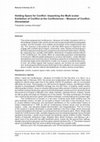
Museum and Society, 2024
This article analyses the Conflictorium - Museum of Conflict, founded in 2013, in Ahmedabad, Guja... more This article analyses the Conflictorium - Museum of Conflict, founded in 2013, in Ahmedabad, Gujarat, India, and its use of museum space both within its designated location and the broader socio-spatial surroundings of the neighborhood and city. The museum is discussed as a site that offers space to experience and engage with conflicts about religion, citizenship, caste, identity and belonging in the historically and contemporary, polyphonic processes of Indian nation-making. By unpacking four, partially interrelated, dimensions of spatial transformations in the Conflictorium, the article offers an empirically-grounded understanding of museums' different spatial strategies to convene information, create affective atmospheres and memories about contentious aspects of contemporary Indian society that might not be attended to in state-run museum or political discourse. In sum, the article argues that museum spaces can function as socio-spatial and-technological infrastructures that forge for the cultivation of consciousness about conflict, and the radical interrelatedness of India's diverse social fabric.

Cultural Infrastructure of Cities, 2023
This chapter uses the analytic of infrastructuring to conceptualize museums along the lines of wh... more This chapter uses the analytic of infrastructuring to conceptualize museums along the lines of what they do, rather than by what they are or are supposed to be. With a practice-oriented and activist approach to museums, this chapter challenges existing, conventional museum definitions. It thus engages infrastructure as a verb rather than as a noun. Infrastructure as a noun predominantly grasps concrete and tangible human, organic, technological and material facilities. In contrast, Matthias Korn et al. (2019: 12) describe infrastructuring as a verb that initiates a shift "from single artefacts and sites to the connectedness and entanglement between them". Accordingly, infrastructuring is understood as an embodied process and practice, that shapes, and is shaped by, socio-spatial encounters between different actors-including people, places, objects, feelings, discourses, histories, herstories and memories. Hence, the chapter deploys the lens of infrastructuring as a malleable and mobile conceptual frame to understand and practices of collecting culture. This chapter argues that if museums are thought of as fluctuating formations that are articulated via practices of infrastructuring, we can better attend to different people and places, as well as the symbolical and material absences and presences of voices, narratives, traumatic and joyful memories, hopes and dreams, that together constitute cultural infrastructure. With the encompassing notion of infrastructuring the museum, existing definitions of museums can be radically challenged. When museums are approached via a lens of infrastructuring, it not only allows for more versatile and less spatially fixed imaginaries of museums, but importantly, also makes room for more socially diverse and intersectional practices of museum-making. The objective of this chapter, then, is to chart novel socially and spatially engaged museum practices as exemplary approaches of doing museums differently.
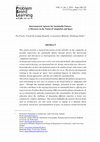
Journal of Problem Based Learning in Higher Education
This article presents a nuanced discussion of four episodes on the complexity of possible traject... more This article presents a nuanced discussion of four episodes on the complexity of possible trajectories for sustainable futures through diverse but intersecting practices and discourses as heterogeneous but complementary articulations of ‘adaptation and space.’ As design and creative processes evolve, new tools and methods, often adopted from science and technology, are integrated into art, design, and architecture. However, knowledge flow in these developments tends to be unidirectional, with science and technology influencing these fields more than vice versa. The diverse developments relating to the concept of ‘space’ have profound impacts on industries, urban habitats, design approaches, and the arts within the expanded field. This article engages in a conversation from four different disciplinary perspectives, each articulating its own voice in relation to the broad notion of ‘adaptation and space.’ Through this multidisciplinary dialogue, presented in four episodes, it critical...

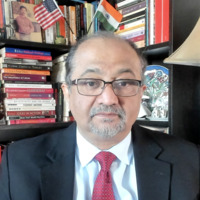

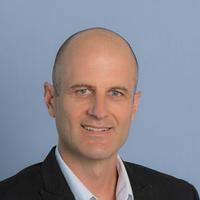



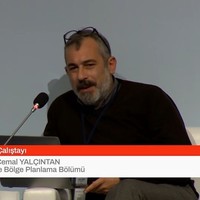

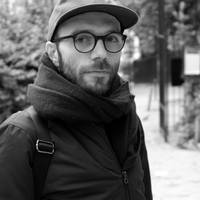

Uploads
Books by Friederike Landau-Donnelly
Papers by Friederike Landau-Donnelly
of art placed in public space. With this exploratory framework of screaming public art
(SPA), we add nuance to understanding the multi-layered relationships between art and planning.
In particular, we push for more context-sensitivity to understand specific histories and traditions
of urban planning. We argue that it is important to be more mindful of how planning
rationales influence the concrete content, function, value, beauty, extent and priority of community
engagement and the commissioning of public art.
The lecture introduces the example of a recent controversy about a cultural planning process in New York City. The construction of New York’s first-ever cultural plan ignites the self-organization of a protesting counter-initiative to the plan, spearheaded by diverse NYC artists. The illustration of this real-life manifestation of contesting the supposedly post-political planning approach serves to show that politics is not at all over, but ever-changing in its appearances and forms.
Against the misconception and/or prejudice that the debate about post-politics is merely a lofty thought exercise amongst intellectuals, ultimately, the lecture seeks to re-politicize politics itself. By demonstrating that preconceptions about what is political (or not) influence everyday lives, new opportunities for political action and change can arise.
Friederike Landau reviews this collection of essays by Nora Sternfeld on 'the radical reconceptualisation of museums as contested public spaces' (published in the original German, De Gruyter, 2018)
Drawing on my pre-pandemic fieldwork from 2019, I present an empirical vignette from recently commissioned public artwork in Vancouver’s historically marginalized neighborhood of Chinatown. By tracing processes of temporary commissioning, street art interventions, and community engagement, I unpack the temporal and spatial ‘politics’ and ‘the political’ of murals. This political difference of public art is nestled between complex urban cultural politics of reconciliation, multi-generational legacies of racism, discrimination and hardship on the one hand, and contemporary challenges of rising property prices, place-branding and policing of public space on the other. It arises between the logistical, bureaucratic, sanctioned ‘politics’ of public art, and its uneven, dislocatory counterpart of ‘the political’ of public art - for example, in the form of graffiti. The analytic of political difference, I argue, helps to empirically and conceptually navigate and possibly also (re)activate always-already lingering antagonisms in the urban cultural fabric.
a poem on pandemic politics, postpolitics, alternatives (or lack thereof) and a revisiting virus
The paper examines the performance First European Fall of the Wall (Europäischer Mauerfall; 2014) by the Berlin-based artist activist group Center for Political Beauty (Zentrum für Politische Schönheit), in which the group temporarily removed White Crosses, a memorial site commemorating civil casualties of the German-German border, situated in the vicinity of the German Bundestag, and transported them to the southern borders of the European Union. While the (unsolicited) literal displacement of the spatial boundaries of Europe (i.e., marking and moving the limits of European space, morale and belonging) might suggest a pro-active form of activism, the paper reveals the group’s activity as situated within a logic of radical negativity rather than positivity. In this vein, the conjuration of the absence of official European migration politics, and the appeal to the fatal vulnerability of the past and future casualties at the border reveal the action as negative practice of activism. Ambiguating the meaning of the terms ‘border’ and ‘limit’, fusing their spatial, symbolical or affective ramifications, the paper sketches the potentiality of ‘negative’ protest via (in)action.
Der Beitrag widmet sich in Anlehnung an die diskurstheoretische Hegemonietheorie Ernesto Laclaus und Chantal Mouffes (1985) der Frage, wie aus Problematisierungen von kulturpolitischen Missständen (z.B. prekäre Arbeitsbedingungen, fehlende Produktionsförderung für künstlerisches Arbeiten) politische Forderungen artikuliert werden. Artikulationspraktiken, die sowohl hegemoniale Setzungen als auch gegenhegemoniale Infragestellungen von Macht hervorbringen, hängen zusammen mit der Formulierung von demands, die Laclau (2005, 2007) als kleinste Einheit sozialer Analyse beschreibt. Mithilfe des Artikulationsbegriffs kann der Transformationsprozess von requests hin zu demands als Aushandlungsprozess von (Gegen-)Macht nachvollzogen werden. Requests entwickeln sich durch Kritik oder Nichtbeachtung im hegemonialen politischen System zu demands, die dann an oder gegen jenes System gestellt werden (Norval 2014). Der Beitrag überträgt diesen machttheoretischen Ansatz auf die Erklärung der Entstehung kulturpolitischer Forderungen, und ist somit im 3. Themenkomplex “Machtvolle Etablierungen und De-Etablierungen“ anzusiedeln.
Neben der politiktheoretischen Verortung bezieht sich der Beitrag auf die in der sozialen Bewegungsforschung verwendeten Ansätze von Framing als Praktiken der Problemdefinition und -attribution (Snow und Benford 1988). In verschiedenen Ausdifferenzierungen werden Problemidentifikationsprozesse als diagnostic framing verstanden, während mobilisierende Impulse als motivational framings herausgearbeitet wurden (Benford und Snow 2000). Mit dem Ziel, einen Dialog zwischen diskurs- und hegemonietheoretischen Ansätzen und den eher empirisch orientierten Framing-Ansätzen herzustellen, um die Entstehung konkreter Kultur(förder)politikforderungen zu erklären, möchte ich zur interdisziplinären Ergründung von kulturpolitischen (De)Etablierungen von (Gegen-)Macht beitragen, die über Betrachtungen von künstlerischem Aktivismus als Ästhetisierung von Protest hinausgehen. Die zentrale Hypothese des Beitrags lautet, dass Artikulationsprozesse im kulturellen Feld performative politische Praktiken hervorbringen, die das ‚semantische Triplet‘ der Beziehungen zwischen Subjekt (wer), Objekt (für wen) und Aktionsverb (was) kulturpolitischer Forderungen produktiv durcheinanderbringen (Franzosi 2004). Somit zielt der Beitrag darauf ab, Kulturschaffende in konkreten politischen Aushandlungsprozessen als politische Agent*innen zu konzeptualisieren, was bislang unterforscht blieb (Woddis 2012; Landau 2019).
Empirie-Import: Framings von (Gegen-)Macht in der Berliner Kulturszene
Um der oben genannten Hypothese der performativen Artikulation kulturpolitischer Forderung nachzugehen, beziehe ich mich illustrierend auf aktuelle kulturpolitische Initiativen und Akteur*innen in Berlin. Neben der 2012 entstandenen spartenübergreifenden Aktionsplattform Koalition der Freien Szene, die anhand zehn konkreter Forderungen den kulturpolitischen Diskurs der Stadt befeuerte, nehme ich einerseits die künstlerische Kampagne rund um Avatara Zeitstipendia, welche sogenannte „Zeitstipendien“ einforderte, in den Blick, sowie den 2018 gegründeten Kunstblock. Letzterer verbündete sich jüngst mit anderen stadtaktivistischen Vereinigungen, die im Rahmen der Demonstration „Mietenwahnsinn stoppen“ Maßnahmen gegen Mietsteigerung und Verdrängung forderten. In einer vergleichenden Analyse dieser aktivistischen Akteur*innen beleuchtet der Beitrag verschiedene, teilweise ineinandergreifende Framings kulturpolitischer Forderungen und schlägt darüber hinaus eine Typologie verschiedener Framing-Praktiken von Kulturpolitiken vor, um einen analytischen Zugriff auf vorläufige (De-)Etablierungen von kulturpolitischer Macht zu erarbeiten.
Drawing on theories of political difference (Marchart 2010, 2013), which differentiate between the ontological realm of ‘the political’ and ontic realizations of ‘politics’, I consider the ZPS performance as a temporary institution of ‘the political’ that affectively disrupts the realm of institutionalized ‘politics’, spatially represented in the materiality of the German Bundestag. I investigate ZPS’ underlying conceptions of temporality, spatiality and affectivity to understand in what ways their performance, understood as a moment of ‘the political’, proclaims and requests political beauty. Resulting from a spectral reading (Derrida 1994) of ZPS’ activist manifesto, I carve out three analytical vignettes – BEAUTY, AFFECT and SEHNSUCHT – to conceptualize political beauty as situated between the desire for political change, which can never be fully satisfied, and a romanticized aestheticization of life (Reckwitz 2012). In short, I reveal political beauty as an affective ‘politic of feeling’ (Bargetz 2014) which goes beyond consensus-obsessed, affirmative or merely aestheticizing paradigms, to suggest political beauty as political practice which is constitutively interwoven with contingency and conflict in its attempts to contest collective or affective social orders.